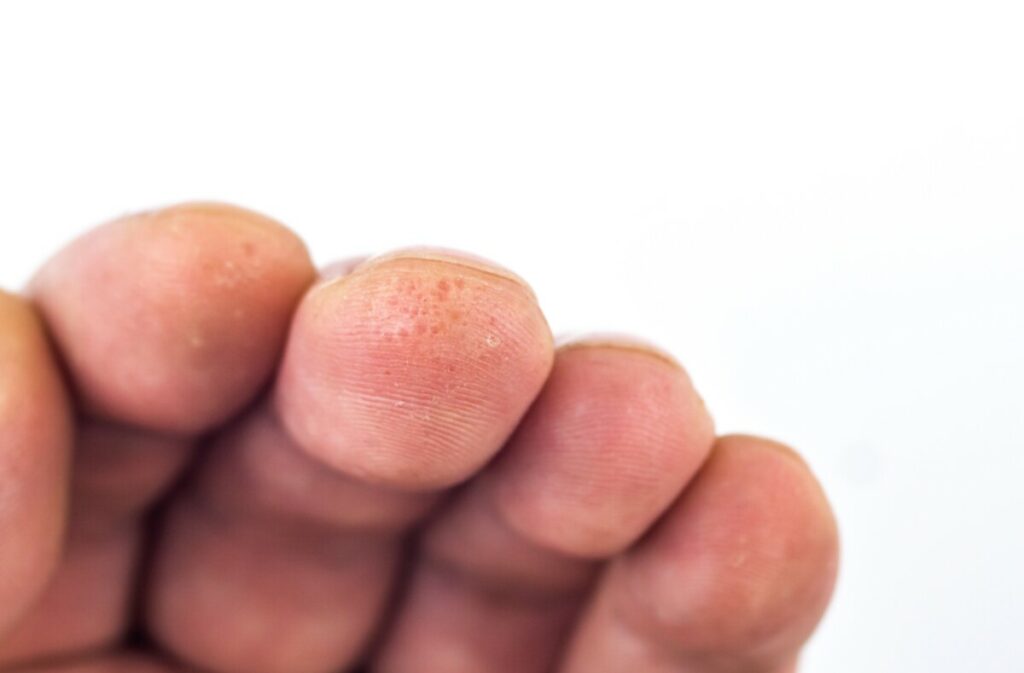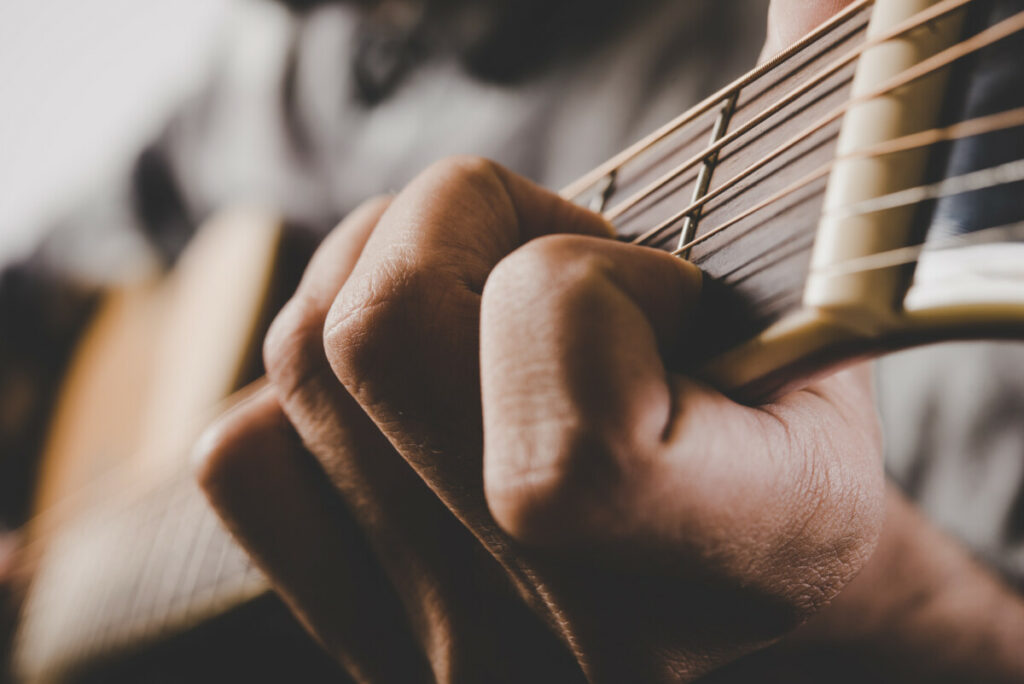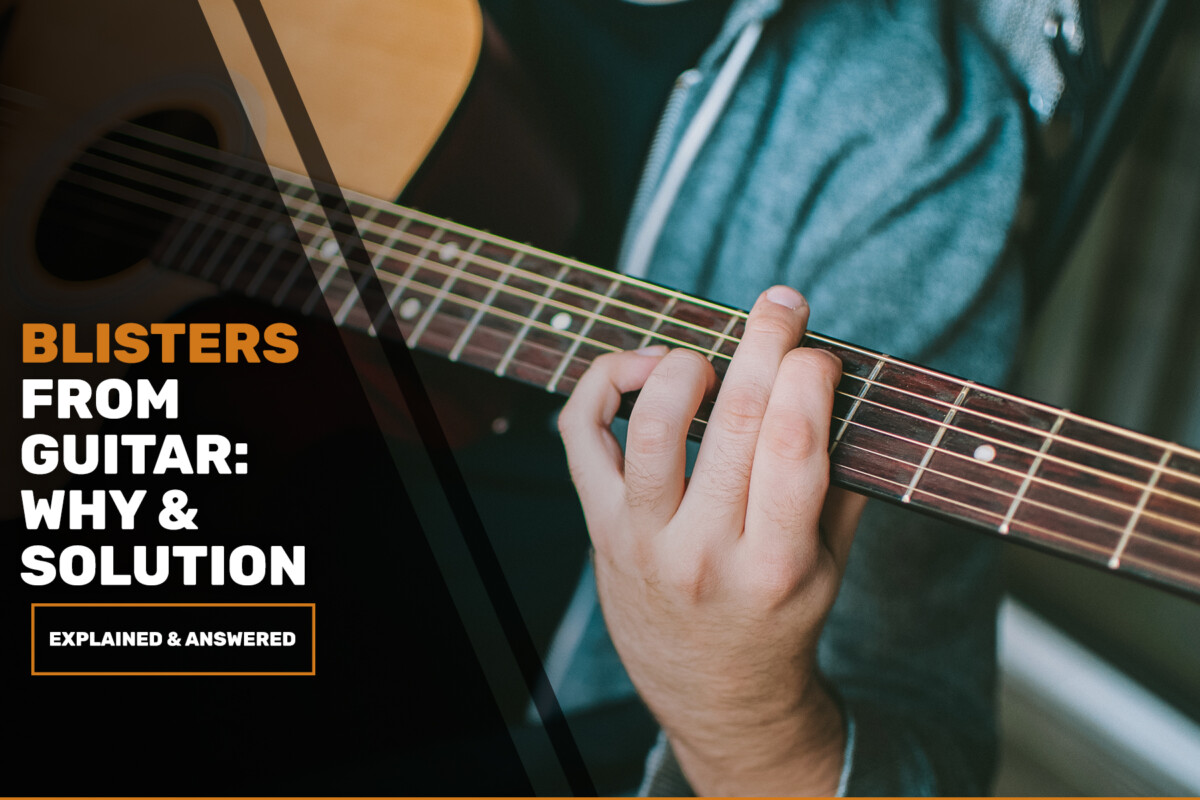Something that every guitar player has faced, at least once in their lifetime, is blisters.
The reason why they appear is because of the repeated friction of the guitar strings against the fingers. Not only are they annoying, but they are also painful, especially if they burst.
So, what can you do to prevent blisters and how can you heal them? In this article, we provide the answers to these questions and more helpful tips when it comes to blisters from the guitar.
Key Takeaways
- Guitar blisters are common, and they usually form on the tips of the fingers you use to press the guitar strings, or the thumb if you fingerpick.
- If you are a beginner you should practice for a shorter period during the day to avoid blisters.
- The best way to treat guitar blisters is by giving them time to heal which means you should stop playing the guitar at least for a few days.
- It is recommended to use hand cream after playing the guitar.
- Generally, guitar blisters take up to a week to heal, but if you continue playing the guitar with blisters or if you burst them, it will take more.
Table of Contents
Blisters from Guitar – Are They Typical?

Yes, everyone who plays the guitar deals with blisters on their fingers.
The blisters usually form on the tips of the fingers you use to press the guitar strings and your thumb if you fingerpick. This is because of the friction between the strings and your skin.
You will likely have to deal with blisters too if you play the guitar often. But even though blisters can cause discomfort, you shouldn’t be worried because there are ways you can prevent and heal them.
The best approach to guitar blisters is to avoid playing the guitar for a few days until they go away. This way you will prevent wounds from forming and you will be able to get back to playing sooner. It is not a smart idea to play the guitar with blisters because it is both uncomfortable and painful.
Also, by spending time away from the guitar you will give enough time for the blisters to heal and your skin will be able to become thicker. This way your fingers will start to develop guitar calluses which will make playing the guitar easier and less painful.
How Can I Prevent Guitar Blisters?

There are a few things that you can consider to be able to prevent guitar blisters from forming.
Take Some Breaks
First, it is important to take breaks between practicing. It is not a surprise that you will develop guitar blisters if you are constantly playing the guitar because of repeated friction.
Maybe you want to learn as much as you can, or you get lost in your guitar practice for hours trying to master the perfect riff, but you should remember that this is a lot of pressure on your fingers and so it will result in blisters. Because of this, it is better to take breaks and be patient.
Practice
Especially if you are new to guitar playing, you should start by doing practice for a shorter period such as spans of 15-20 minutes. Later on, when you gain more experience and guitar calluses form you will be able to practice for long hours.
Don’t Press Too Hard
Another mistake that many guitar players make is pressing too hard on the guitar strings. You might think that by doing this you will be able to hit the cord better, but actually, you can do just fine without as much pressure. With a lighter touch, you will also be able to avoid blisters. If you need to, you could adjust the space between the strings and the fretboard (the string height) as well.
Use of Lotions
Something that is recommended to use after playing the guitar is hand cream. This is because the cream will give protection from the constant friction to the skin on your fingertips and allow it to restore itself faster.
How Can I Heal Guitar Blisters?
As we have already mentioned, the best way to treat guitar blisters is to give them some time to recover and heal on their own. This means you will have to forget about practicing guitar for at least a few days.
Especially, if you are a beginner, your skin is not used to constant friction, and because of that, it can be painful. Don’t forget to use hand cream as well to be able to help your skin recover faster with more moisture and protection.
When it comes to bursting your blisters, that is something you should never do. It is not a solution, but will only cause more pain and then your fingers will take longer to heal. You are also exposing your fingers more to the friction which can make you bleed or cause infections in the wound.
How Long Do Guitar Blisters Take to Heal?

Generally, guitar blisters take around a week to heal, but it depends on the size of the blister and what you do about it. They can be healed in even less than a week if you stop playing the guitar and if you use hand cream as recommended.
On the other hand, if you continue playing the guitar with blisters or if you burst the blisters, you will likely create a wound that may even cause bleeding. In this case, your skin needs more time to recover completely and it will take up to 2 weeks for your guitar blisters to heal.
It is certainly important to remember that your skin needs time to recover and develop calluses which will eventually allow you to play the guitar without having to deal with blisters.
When you have developed calluses it will be easier for you to press down on the strings because the skin of your fingertips won’t be as soft as before. Because of this, you should try to be patient.
Final Thoughts
Blisters are something every guitar player has to go through, but they shouldn’t be an obstacle in your music journey. If you follow our tips and give your skin enough time to recover, you will be able to get through this process easily. Practicing the guitar may have its fair share of difficulties, but that shouldn’t stop you from having fun and chasing your dreams.

